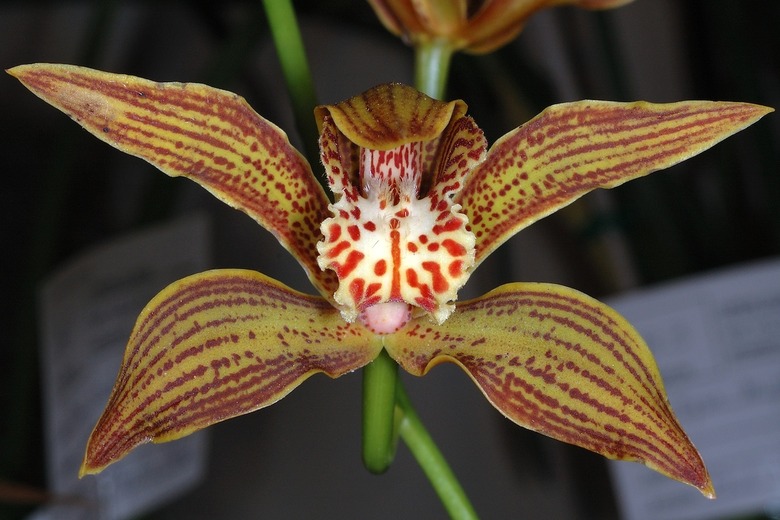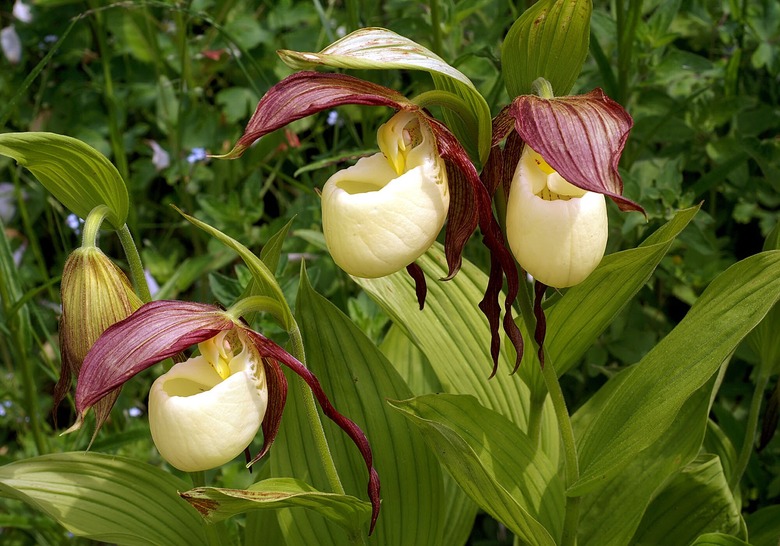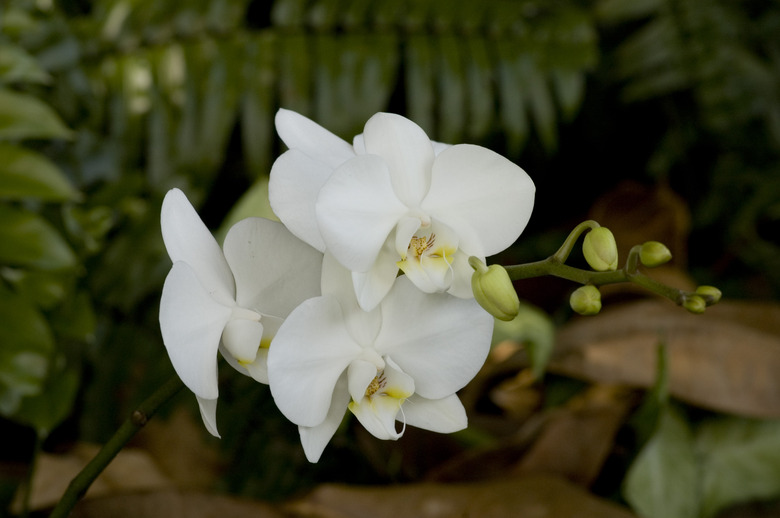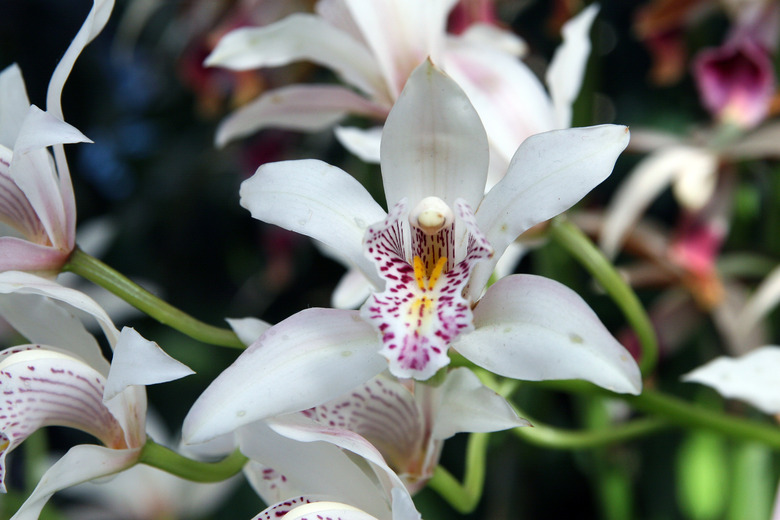The Toxicity Of Cymbidium Orchids
While orchids contain a compound that might cause an allergic reaction in some people, this occurrence is rare. There is no evidence that any orchids, including those in the Cymbidium group, pose a serious threat of toxicity, in spite of numerous claims on the internet to the contrary.
About Orchids
All orchid plants are members of the Orchidaceae family, which comprises a vast array of orchid species, some of which are terrestrial and some epiphytic, meaning they attach themselves to trees and live off nutrients they find in the air, water or plant material around them.
Among this enormous volume of species and hybrids are several orchid varieties that are commonly grown as houseplants because these plants are cold-sensitive.
Lady Slipper
Lady slipper orchid (Paphiopedilum group, zones 9 to 12), also called venus slipper, has a lower petal that resembles a pouch, hence its name. These orchids come in multiple colors, sometimes with stripes, spots or colored veins.
Note that there is another variety of lady slipper, often called Kentucky lady's slipper (Cypripedium kentuckiense, zones 3 to 8), that is much more cold hardy than most orchids.
Moth Orchid
The moth orchid (Phalaenopsis group, zones 10 to 12), also called the phalaenopsis orchid, is considered the easiest type of orchid to grow at home. It is a genus that is mostly epiphytic. Its name is due to the shape of its petals, which resemble a moth or butterfly with open wings.
Cymbidium Orchid
The cymbidium orchid (Cymbidium group, zones 10 to 12) is primarily a terrestrial type, although some are epiphytic. These are large plants and can reach 4 feet in height with a spread of 3 feet, depending on the variety.
Are Orchids Poisonous to Animals or Humans?
Some people are concerned that orchids may be poisonous or dangerous in some way if ingested or handled. In general, this is not the case.
Orchid Ingestion
Orchids are not categorized as poisonous plants. They are nontoxic plants considered pet-friendly and safe for cats, dogs and other animals, according to the American Society for the Prevention of Cruelty to Animals.
Warning
The ASPCA warns that even pet-safe plants can cause some stomach upset or digestive system problems if ingested by your canine or feline friends, so try to keep floral arrangements away from your pets or children.
Orchid Skin Irritation
You may have read that orchids can cause contact dermatitis when handled. According to several studies regarding the toxicity of orchid plants or orchid leaves, this concern is mostly unfounded.
The chemical of concern is quinone, which is present in orchids and about 50 other plant species. An article "Contact Dermatitis from Orchids" published by the University of Michigan reports that a 1984 study conducted among orchid growers surveyed 53 employees and found no instances of contact dermatitis. However, it also reported two isolated incidences occurring elsewhere in which an allergic reaction was recorded from contact with lady slipper and cymbidium orchids. This reaction appears to be rare.
The take-home point is that you are unlikely to develop contact dermatitis from orchids, although a small number of people may be susceptible to quinone.



